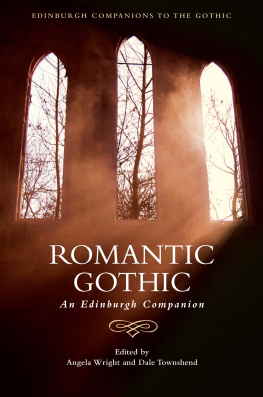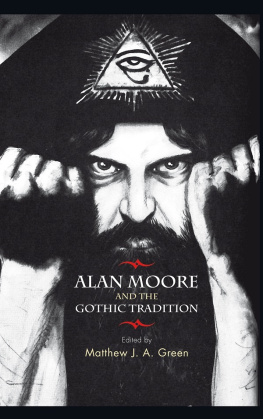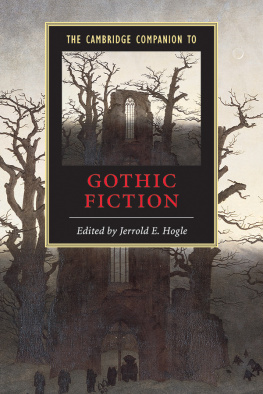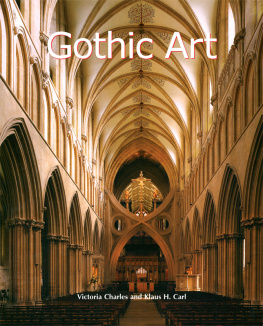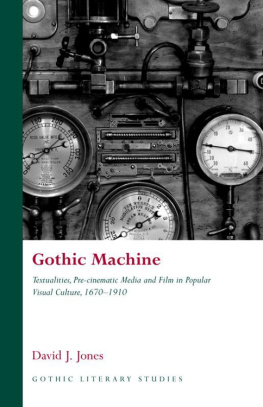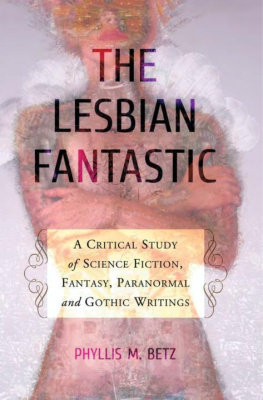Contents
DIS/CONTINUITIES
TORU STUDIES IN LANGUAGE,
LITERATURE AND CULTURE
Edited by Mirosawa Buchholtz
Advisory Board
Leszek Berezowski (Wroclaw University)
Annick Duperray (University of Provence)
Dorota Guttfeld (Nicolaus Copernicus University)
Grzegorz Koneczniak (Nicolaus Copernicus University)
Piotr Skrzypczak (Nicolaus Copernicus University)
Reviewer: Agnieszka Salska
Vol. 4
Agnieszka owczanin / Dorota Winiewska (eds.)
All that Gothic
Bibliographic Information published by the Deutsche Nationalbibliothek
The Deutsche Nationalbibliothek lists this publication in the Deutsche Nationalbibliografie; detailed bibliographic data is available in the internet at http://dnb.d-nb.de.
The publication was financially supported by the University of d
Library of Congress Cataloging-in-Publication Data
All that Gothic / Agnieszka owczanin, Dorota Winiewska (eds.).
pages cm. (Dis/Continuities. Toru Studies in Language, Literature and Culture ; Volume 4)
ISBN 978-3-631-63887-3
1. Gothic fiction (Literary genre)History and criticism. 2. Gothic revival (Literature) History and criticism. 3. Horror filmsHistory and criticism. I. owczanin, Agnieszka, 1970- editor of compilation. II. Wisniewka, Dorota, 1972- editor of compilation.
PN3435.A44 2014
809.38729dc23
2014003857
ISSN 2193-4207
ISBN 978-3-631-63887-3 (Print)
E-ISBN 978-3-653-04226-9 (E-Book)
DOI 10.3726/978-3-653-04226-9
Peter Lang GmbH
Internationaler Verlag der Wissenschaften
Frankfurt am Main 2014
All rights reserved.
Peter Lang Edition is an imprint of Peter Lang GmbH.
Peter Lang Frankfurt am Main Bern Bruxelles New York Oxford Warszawa Wien
All parts of this publication are protected by copyright.
Any utilisation outside the strict limits of the copyright law, without the permission of the publisher, is forbidden and liable to prosecution. This applies in particular to reproductions, translations, microfilming, and storage and processing in electronic retrieval systems.
This book is part of the Peter Lang Edition list and was peer reviewed prior to publication.
www.peterlang.com
About the Author
Agnieszka owczanin specializes in British literature of the 18th and 19th century. She obtained her PhD from the University of d (Poland) with a dissertation which focused on the deployment of death in canonical novels of this period and in Gothic fiction.
Dorota Winiewska graduated from the English Institute, University of d. She obtained her M.A. from the University of Toledo (USA), and her PhD from the University of d. Her areas of scholarly interest include American Gothic fiction and horror film, pop culture and gender studies.
About the Book
This book provides a comprehensive introduction to the history, aesthetics and key themes of Gothic, the main issues and debates surrounding the genre along with the approaches and theories that have been applied to Gothic texts and films. The volume discusses a wide range of 18th and 19th century texts and moves into 20th century literature and film. It explores the cultural resonances created by the genre and raises a variety of issues, including the ways in which Gothic monstrosity mimics same-sex desire and social transgression. The texts included in the volume argue that Gothic film and fiction animated the darker shadows of the dominant culture.
This eBook can be cited
This edition of the eBook can be cited. To enable this we have marked the start and end of a page. In cases where a word straddles a page break, the marker is placed inside the word at exactly the same position as in the physical book. This means that occasionally a word might be bifurcated by this marker.
| 7
The aim of this monograph is to present an overview of the rich range of expression and form the Gothic has taken in Western culture since its emergence in late eighteenth century England. Though at first restricted to literature and to the Old Continent, the genre spread across the Atlantic, finding fertile ground for expression on the New Continent, on the one hand, drawing from the European gothic tradition and on the other, enriching it with new themes and strong local flavours.
In the nineteenth century Gothicism appropriated a new body from folklore, the vampire, thus manifesting the genres confident indifference to the high vs. low culture dichotomy. Gothic fiction evolved into ghost and vampire stories, which became a territory for addressing the taboo, themes otherwise inappropriate for this eras standards of propriety and decorum. Gothicism has always been a highly visual genre and its insistence on the marriage of image with emotion has granted it a permanent presence in cinema from its very beginnings in the early decades of the twentieth century. Gothic imagery and themes have been indispensable elements for cinematography, not only through numerous adaptations of classic gothic and vampire stories but mainly because of the genres aesthetic potential, its subversive ideologies and legacy of contestation.
The title and the structure of this volume illustrate that Gothicism is deeply rooted in our culture and creative consciousness, crossing continents, taking on various forms and shapes and becoming a tool of expression for the fears that consume us. Its transcontinental, transgeneric and temporal transformations demonstrate its hybridity, and its undying, almost monstrous potential. Escaping easy categorisation, shrugging off definitions, but longing for modifiers like postcolonial, urban, male, female, queer Gothicism is blatantly ubiquitous, oozing into our reality in provocative guises. This collection of essays has been guided by the conception of gothic themes and provinces sketched out below, and represents an attempt, perverse as it may be, to put together a contemporary overview of gothic studies.
The content of Chapter One American Gothic indicates that gothic has become firmly established as the name for one sinister corner of the American imagination and sensitivity; from the unresisted acts of perversity and insane violence in the tales of E. A. Poe, examined in this volume by Weronika aszkiewicz, to Harriet Beecher Stowes Sam Lawson's Oldtown Fireside Stories and their themes of the body, heredity and guilt, analysed by Marek Wilczyski; from H. P. Lovecrafts crude, obsessive, sensationalist prose in the service of naming the unnameable addressed by Wit Pietrzak to the Ekphrastic Horror in Stephen Kings morbid tale The Road Virus Heads North, articulating 7 | 8 his own apprehension concerning the cultural status of the genre discussed here by Zofia Kolbuszewska.
Chapter Two Post- (Colonial) Gothic deals with texts which belong to this new-fangled category of postcolonial Gothic. The first article by Dorota Filipczak explores the familiar connection between Gothicism and colonialism while applying Julia Kristeva's concept of abjection to the relation between mothers and daughters in a short story The Peace of Utrecht by Alice Munro, associated with the so-called Ontario Gothic, and Jamaica Kincaids novel, The Autobiography of My Mother. Anna Branach-Kallas shows in her analysis of fiction by Tomson Highway, Joseph Boyden and Eden Robinson how postcolonial Gothicism, while allowing a move beyond the stereotypical interpretation of texts by Canadian Aboriginal writers, simplifies Indigenous aesthetics in response to the postcolonial awareness fashionable in academia today.



